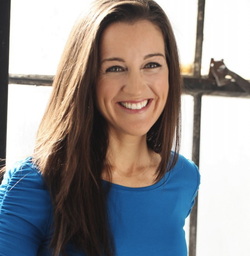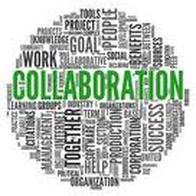|
Twitter has been a wonderful professional development type opportunity on a day-to-day basis as many great educators from around the world can connect and share their wisdom, knowledge, and good teaching practice. The tendency for me has been to tune into and focus on connecting with other educators that share the same vision that I have. I have been very fortunate to make a connection with Amanda Stanec and through Twitter and by email, we have had some excellent discussions about 21st century learning as it related to different instructional models and approaches in the arena of physical education. Despite Amanda's busy schedule, she happily agreed to guest blog on PYP PE with Andy. Here is a bit more about Amanda Stanec.  Amanda's Bio Dr. Amanda Stanec was born and raised in Nova Scotia, Canada where she attended and played soccer for St. Francis Xavier University. Through these years, Amanda developed a strong worth ethic to accompany her active lifestyle, in sport and other physical activities, and positive outlook on life. Amanda moved to the US over 15 years ago to begin her teaching and coaching career. During this time, she also attended graduate school at Virginia Commonwealth University. Amanda attained a Masters of Science with an emphasis in physical education and sport psychology from VCU. Completely cool with her love of learning, Amanda enrolled in a PhD program in Kinesiology within the Curry School of Education at the University of Virginia. Here, Amanda was awarded the outstanding doctoral student in the Curry School of Education at UVa in her graduating year (2006). Amanda’s two biggest successes – by far – are her two young children who inspired ABLE: Education & Wellness Consultants. Through Amanda’s pursuit of modeling an active, productive, and positive life to her children, ABLE was formed. Amanda can be found on Twitter at https://twitter.com/MoveLiveLearn and through her consulting business here. Amanda's Guest Blog First, I want to thank Andy Vasily for inviting me to contribute to his amazing blog. I haven't known Andy very long, but I respect his work very much and am already a big fan. In other words, I am humbled to offer my thoughts on how physical educators can empower students to take control of their learning. Physical education (PE) does not magically teach life lessons. Teachers must carefully plan to connect learning experiences to life outside of the PE classroom. When this happens, PE provides an unique platform to: teach life lessons; make connections to content learned in the classroom; and, (of course) to teach important health-related material related to physical education. In short, content learned in PE is incredibly important. Empowering students to take responsibility in their learning is critical to preparing them adequately for the 21st century.  So how do we do it? Below are three tips that physical educators can immediately incorporate into their classes to increase students' sense of empowerment in their classes. 1. Foster Student-Centered Learning. Student-centered learning is defined slightly different throughout the literature. For the purpose of this post, student-centered learning is when the needs of students are considered in all aspects of planning, teaching and assessing in physical education. In student-centered learning, traditional direct teaching - or teacher-centered learning - is replaced with the teacher serving more as a facilitator in the learning process rather than a commander. Students-centered learning in physical education may take shape as: student choice; student interest; peer and self-assessment; and students' personal goals are evident. Example of student-centered learning physical education. In a teacher-centered class, physical educators might explain rules, skills, and strategies necessary for optimal participation in activity prior to the activity occurring. Contrarily, in a student-centered environment, a physical educator might design a physical activity where students participate in fitness stations and earn cards which have such rules,skills and strategies written on them. After forming groups during a stretching/strengthening stationary task(s), students share and organize cards to determine how the activity should be carried out in order for optimal success. Voila! Students are engaged, ALT-PE (Academic Learning Time - Physical Education) is high, students are having fun, and students become responsible to share content with their peers. Win. Win. Win. Win. As you might imagine, the physical educator would have more opportunity to give skill specific feedback during such an activity while students are piecing together what is to come, rather than sitting students down to explain an upcoming activity. And, that's not all. Facilitating lessons such as this make teaching so enjoyable to the physical educator as the light bulbs are switching on throughout the teaching space.  2. Promote Collaboration in Physical Education. We hear it all the time. 21st Century Learning. I'm okay with that. I like the concepts put forward to promote 21st century learning - collaboration being perhaps my favorite. Before I talk about what "good" collaboration among students in physical education looks like, I would like to encourage everyone reading this post to work tirelessly to collaborate with other educators in their schools. Why? Well, schools are often designed to marginalize PE teachers from other educators in the building. We often work in a corner of the school furthest away from the school's entrance and classrooms. Maybe it's because physical activity + fun + engagement = loud. Regardless, it's hurt our profession. We need classroom colleagues to see what we are doing so they can weave physical activity throughout all their lessons, and we need to work hard to incorporate their materials in our classes to make learning more meaningful for all students. How? Reach out. Send an email and ask what students are struggling with in their math, science, social studies, and language arts classes. Make it a point to weave these problem areas into the lessons. Offer to hold a PD session at the school centered around kinesthetic learning or physical activity in the classroom or how to incorporate aspects of physical literacy into their lessons. Let them know that you don't view education as a "we" vs "them". Collaborate in a way that promotes teaching the whole child, not just one side of a child's brain. Collaboration Among Students? In my humble opinion, in order to promote effective student collaboration physical educators must teach students communication skills. These communication skills include (but are not limited to): listening, verbal communication, and non-verbal communication. A key point to consider is that students should demonstrate the ability to collaborate effectively with all members of their class community. Thus, students might need to: speak in close proximity to a child who is deaf; speak in far proximity to a student on the Autism Spectrum; or, demonstrate more patience than normal toward students who they simply don't connect with. Moreover, students should be given opportunity to identify areas of outside of school where collaboration are essential, and understand why.  3. Connect with Your Students. Hopefully, you know your students. If not, get to know them. I know this isn't always easy when some students unfortunately only have quality PE once in five days and class sizes are large, but we must work tirelessly to build community early in the school year. Either way, student motivation is a great predictor of not only your lessons, but how your students are feeling and whether or not something is weighing on their minds. You read their faces if they are stressed, sad, or frustrated. When you see students' motivation decrease, ask them why. Maybe you planned a poor lesson, maybe their scored lower than desired on a math assessment, or maybe their feelings were hurt by a peer. Make sure you take the time to ask what's going on in order to help them refocus their learning efforts. The impact? I recall a class of grade 8 girls who seemed so down. I stopped my entire lesson and talked with them. They had PE five days a week and while I would never had done this early in my career, I wanted them to know that I cared deeply. Yep. We "talked" for an entire 40 minutes. Guess what happened? Those 21 students gave me the most amazing effort the remainder of their final year in middle school you could ever imagine. We bonded and this completely empowered them to take control of their learning. What did we talk about? First, I listened. I remembered being 14 years old. Then, I talked. I talked about gratitude. I talked about opportunity. Finally, I asked them questions. I asked them to talk to each other. And then, I told them I loved them. By times, it is an absolute necessity to talk things out. Of course we want to maximize and optimize physical activity at moderate to vigorous intensities - we want our students to gain health benefit from our classes. However, it is also justifiable to talk things out when the intent and result is a deepening their understanding of an important life skills / enduring concepts. This being said, it's even better when such conversations can happen during "active learning" environments (i.e., at the end of an activity when students are cooling down / stretching). Summary Empowering students' learning in physical education is critical to optimizing activity time as well as learning the important concepts in physical education, classroom materials, and life skills. It takes planning and practice, but it's definitely worth it. Hopefully these three tools will fit in your PE tool box and allow you to get your job done to the standard that your students deserve and you strive for. Best wishes, and keep making a difference in the lives of your students - your work matters...a lot.
0 Comments
Leave a Reply. |
AuthorKAUST Faculty, Pedagogical Coach. Presenter & Workshop Leader.IB Educator. #RunYourLife podcast host. Archives
September 2022
|
 RSS Feed
RSS Feed